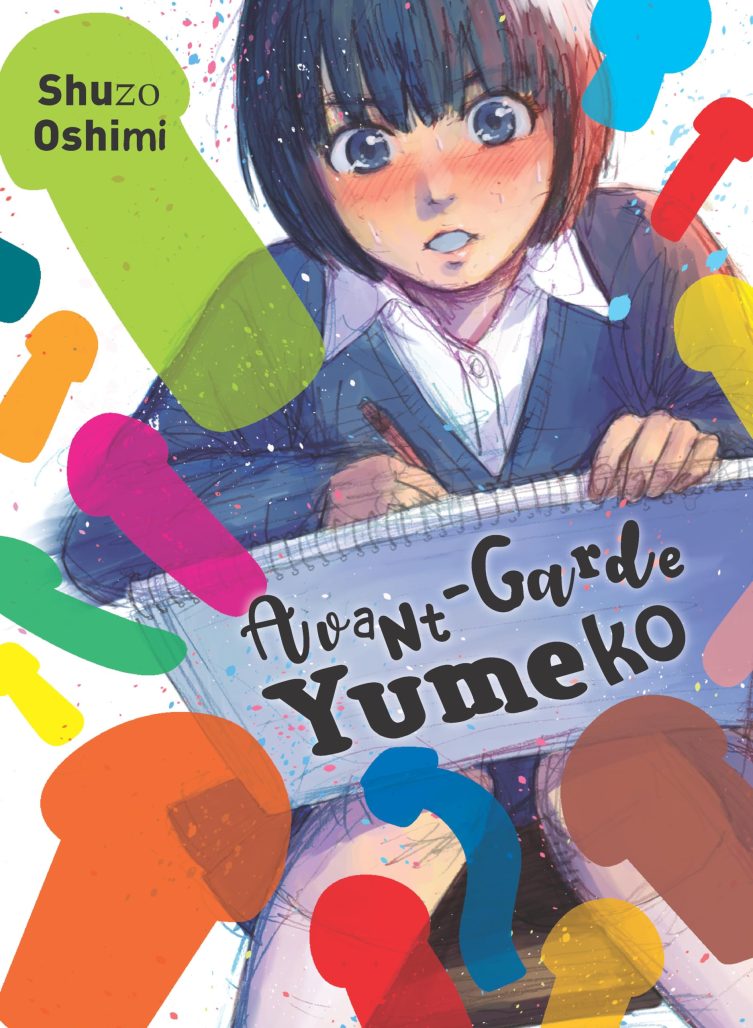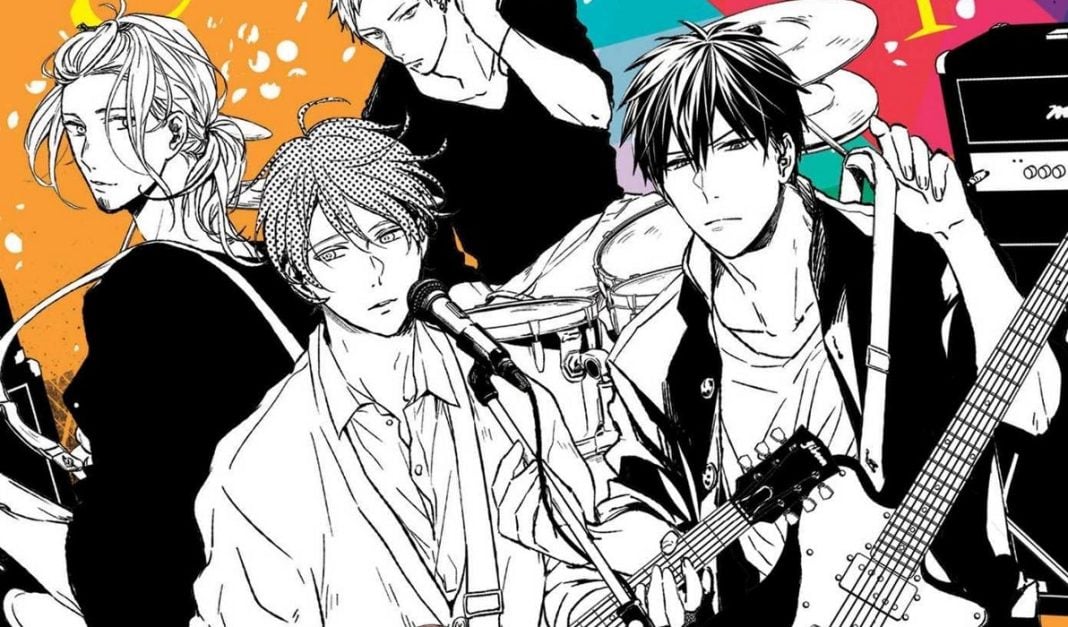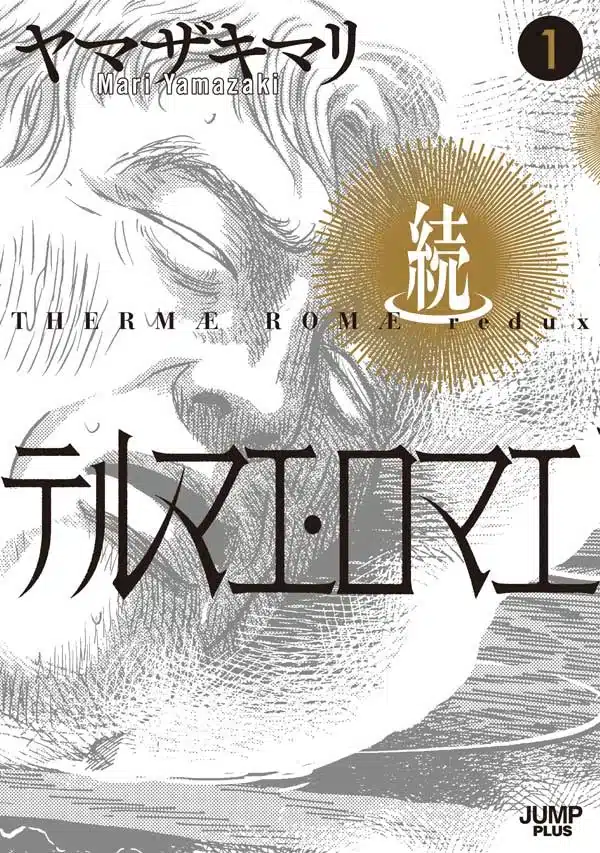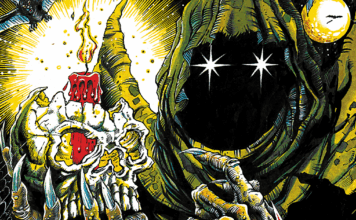With more people reading manga and Webtoons (aka vertical scroll comics) than ever before, Beat’s Bizarre Adventure gives three writers an opportunity each week to recommend some of their favorite books and series from Japan, Korea and elsewhere. This week we have snoozing guitar players, time-traveling architects, and, of course, eggplants (!?)

given
Writer/Artist: Natsuki Kizu
Translation: Junko Goda
Touch-Up Art and Lettering: Sabrina Heep
Cover and Graphic Design: Jimmy Presler
Editor: Leyla Acker
Publisher: SuBLime
given, created by Natsuki Kizu, is a fantastic Boys’ Love starter series that hits all of the emotional beats (pun intended). It reminds me of Yuri!!! On Ice in that while it’s marketed as BL, to me it’s a music story that happens to feature characters in a same-sex relationship.
The series begins with high schooler Ritsuka Uenoyama visiting his favorite spot atop the staircase during break. He finds another boy, a classmate, taking a nap on that staircase while hugging a guitar with broken strings. That boy, Mafuyu Sato, is extremely shy but possesses a beautiful singing voice. So Ritsuka promptly invites him to join his band. Yet he soon realizes that Mafuyu has been shouldering trauma from the death of his ex-boyfriend Yuki. Ritsuka hopes that music can provide Mafuyu the closure he craves, and be the balm to heal his pain.
It can be challenging to convey an auditory experience, like music, through a visual medium like manga. Natsuki Kizu does a wonderful job of expressing the emotional aspects of what music can do through her artwork. Take the first chapter of given, when Ritsuka fixes Mafuyu’s guitar and he hears music come out of it. Even though only half of his wide-eyed expression is shown, you can see the impact it made on Mafuyu, who never thought he’d hear the sound of that guitar again.
given also deals with depression and grief. While Mafuyu appears, in some ways, to have “moved on,” the sadness that comes from losing his boyfriend will always be a part of him. There’s a gentle, almost warm, touch to how Kizu handles such concepts. It leaves you feeling satisfied in a bittersweet way. Kizu does a wonderful job of weaving music into each character’s personal development and interpersonal relationships, showing how it can break or bring people together. — Hilary Leung
Thermae Romae Redux
Writer/Artist: Mari Yamazaki
Translation: Madison Griswold
Lettering: Kristine Dela Cruz
Editing: Medibang Inc.
Platform: MANGA Plus
Thermae Romae Redux is the witty, genre-bending sequel to Mari Yamazaki’s original hit manga Thermae Romae. First serialized in Shōnen Jump+ in early 2024, this new chapter continues the absurdly delightful adventures of Lucius Modestus, a Roman bathhouse architect who time-travels between 2nd-century Rome and modern Japan. While the premise is bizarre at first glance, the story delivers a surprisingly thoughtful meditation on cultural exchange and innovation.
At the beginning of Thermae Romae Redux, Lucius is sixty years old and suffering from chronic back pain. While struggling to stay relevant in a thriving Roman Empire under Emperor Antoninus Pius, he is inexplicably transported to various bath-related locales in present-day Japan. These visits, often humorous and surreal, help him resolve the challenges he faces back home, ranging from bathhouse designs to social dilemmas (just wait for the “donkey milk” absurdity in chapter 5).
Thermae Romae Redux stands out thanks to its clever use of historical anachronism. Yamazaki masterfully juxtaposes Roman austerity with Japanese modernity, shedding light on cultural practices and engineering marvels with both respect and humor. One particularly memorable episode features Lucius at a fertility festival in rural Japan, hilariously reacting to its bold displays while unknowingly drawing plans for a bathhouse that would later be hailed as a tribute to Roman vitality.
Yet, the sequel is not without its flaws. The time-travel device becomes formulaic over time, and new emotional subplots (such as Lucius’s missing wife and incomprehensible son) lack the development they deserve in early chapters. Still, these narrative threads set the stage for a more introspective story.
Thermae Romae Redux is a charming, intelligent manga that offers more than just laughs. It bridges East and West, past and present, reminding readers that even the most mundane of human rituals—like bathing—can be a source of inspiration, healing and connection. It is worth checking out if you enjoy historically rich but also humorous manga with beautifully crafted illustrations. — Ilgın Side Soysal

Avant-Garde Yumeko
Writer & Artist: Shuzo Oshimi
Translation: Winifred Bird
Editor: Daniel Joseph
Production: Tomoe Tsutumi, Pei Ann Yeap, Hiroko Mizuno
Proofreading: Micah Q. Allen
Publisher: Kodansha
The cloud floating in the sky. The baseball bat in a stranger’s hand. The bottle on the table. Everywhere Yumeko looks, she sees a guy’s “eggplant”. Not that she’s obsessed with sex. On the contrary, she isn’t the least bit interested in the act. She just wants to see an “eggplant” in real life so bad! This passionate curiosity leads her to the school’s art club; the only member of the club, Shoichi, has no way of knowing what he signs up for when he recruits Yumeko.
Shuzo Oshimi is a renowned manga artist known for works such as Blood on the Tracks, The Flowers of Evil, and Welcome Back, Alice. Avant-Garde Yumeko was released in 2003 in Japan and is the creator’s earliest work licensed in English. The cover of the English edition, which depicts Yumeko flushed with excitement and surrounded by mushroom-like shapes as she draws, bursts with color.
Avant-Garde Yumeko, at its heart, is about a young girl pursuing her curiosity relentlessly. From looking at teen magazines to secretly listening in on her classmates’ “first time” conversations, she tries all sorts of methods to get a sense of what a penis is like, but to no avail. She ends up at the art club simply because attending an art school that does nude drawings is too expensive. Plus, the art club already has a guy. And it’s free.99! Two eggplants with one stone.
It’s a roller-coaster ride from there on, as if it wasn’t one already. Yumeko doesn’t stop at guilt-tripping or stepping over Shoichi’s personal boundaries. Her disregard for anything else except her wants is compelling and also frustrating to read. But it’s all to make a point, and that clearly comes across.
The book includes a two-page commentary from Shuzo Oshimi on why he decided to tell a story of a young girl obsessed with peens. I’m not an artist myself, but I was reminded of a tip that artists I follow online have voiced when asked how to get better at art. It was to find something that you’re obsessed with, such as an anime character, let it consume your soul, and constantly draw that thing your head is always full of! Shuzo Oshimi, too, approves of this useful tip.
Avant-Garde Yumeko is no doubt a unique manga and one that might not make too much sense or blow your socks off. I think it would read best with no expectations. Still, if you love Oshimi’s works or you’re looking for something memorable and weird in a good way, you should give our sweet Yumeko a chance! — Merve Giray
Follow Beat’s Bizarre Adventure to get weekly manga and webtoon recommendations!











